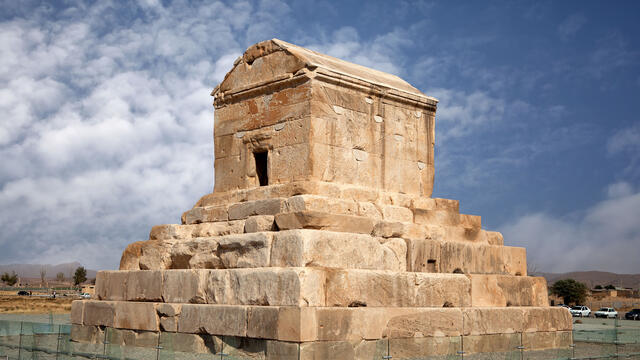Exile and Restoration: Ezra and Nehemiah
How the Jewish people returned from Babylon under the leadership of Ezra and Nehemiah

What do we know about the Babylonian exile?
The books of Kings and Chronicles end with the exile of Judah, although Chronicles adds the proclamation of Cyrus as an epilogue. Although the theme of exile is prominent throughout the narratives, and indeed throughout the Bible as a whole, the long narrative sequence from Genesis through Kings, and also Chronicles, contains nothing about life in the Babylonian exile. (Diaspora life is the setting for the books of Esther and Daniel.)
Fortunately, the life of Israelite and Judahite exiles living in Assyria, Babylonia, and Egypt is documented in writings from these countries (see Ancient Israel in Foreign Writings, Documents relating to Israelites and Judeans in Assyria and Babylonia, and The Jews of Elephantine in Their Own Words). The northern Israelites exiled by the Assyrians were dispersed to places in and around Assyria, as the Bible states, and Assyrian documents refer to individual Israelites serving in military and administrative roles and working on building projects. Documents from Babylon record that King Jehoiachin, who was deported to Babylon in 597 BCE, received food rations from the Babylonian palace. Other documents illustrate the life of Judahites in other Babylonian cities and towns. The Babylonians kept at least some exiled communities (not only Judahites) intact and allowed them to manage their own internal affairs. They also settled them on land in return for taxes and military or corvée service. There was even a town called Al-Yahudu (“Judahtown”). The Jews—that is, the descendants of the Judahites—were not slaves or an oppressed minority; some were prosperous, and a few even held minor government posts or served as royal merchants.
What happened when the Babylonian exile ended?
The biblical account of Israel’s story resumes in the book of Ezra-Nehemiah with the return of some of the exiles to Judah under the leadership of Ezra, a priest and scribe, and Nehemiah, the governor of Yehud (as the Persians called Judah). The style of this book differs from the earlier narrative books in that it contains memoirs in the first and third person as well as letters and proclamations by various officials and Persian kings. Parts are written in Aramaic. The main tasks that occupied the returnees were the rebuilding of the Temple, the reconstruction of walls to protect Jerusalem, and the people’s commitment to follow the laws of the Torah. Matters of Jewish identity loomed large and needed to be redefined. In Ezra-Nehemiah, the “real” Jews were those who had been exiled and had returned, not the people whom the returnees found in Judah upon their return. The book is concerned with the genealogical “purity” of the Jews and is especially careful about the priestly line, given that priests will need to serve in the rebuilt Temple. It stresses the continuity between the returnees and pre-exilic Israel, and views the returnee community as heirs to the land promised by God to Abraham.
The fact that some Babylonian Jewish exiles were resettled as a group probably facilitated the later return of some Jews from exile, while the congenial conditions in Babylonia explain why many did not return. One measure of their acculturation is the names they gave their children. Many personal names in the ancient world contained the name of a deity; “Obadiah,” for example, means “servant of Yah” (a short form of YHWH). Among the Babylonian Jews, some were given Hebrew names that included YHWH or forms of it, such as “Hananiah,” while others were given Babylonian names that contained the names of Babylonian deities, such as Nanaiddina, meaning “the goddess Nana gave.” Whether parents chose Babylonian names for religious reasons or simply because they were fashionable in the Babylonian milieu is uncertain. There is some evidence that among the Jews living near the Babylonian city of Nippur, YHWH names may have regained popularity around the time that Ezra and his followers returned to Jerusalem; both these developments perhaps reflect a renewed sense of Jewish identity.
Documents from Egypt relate to a Jewish military colony in the service of the Persian Empire, located on the island of Elephantine. Though subject to the Persian authorities, these Jews were not slaves. Their internal affairs were governed by their own leaders, and they owned real estate. They were in contact with Jerusalem, maintained certain Jewish religious practices, and almost always gave their children YHWH names. They had a temple for YHWH and made donations to it for YHWH, but also for other deities (see Biblical Genealogies, Lists, and Catalogues). Their temple was destroyed by the priests of the Egyptian god Khnum, for unclear reasons. Documents from both Babylonia and Egypt attest to some marriages between Jews and non-Jews.
Seal impressions and coins from the Persian province of Yehud provide information about the administration of the province and tell us that many of its governors were, like Nehemiah, Jewish (see Israelite Inscriptions from the Biblical Period and Ancient Israelite Coins and Scales). There is also a collection of Aramaic papyri from Samaria (the former capital of the Northern Kingdom), from approximately 370 to 335 BCE, the last forty-five years of Persian rule (see Slave Sale). More than half the people mentioned in them had identifiably Hebrew names, although it is not known whether they were descendants of Samaria’s original Israelite population or were foreigners who were settled there later and became worshipers of YHWH, as mentioned in 2 Kings 17:24–31, 41.

